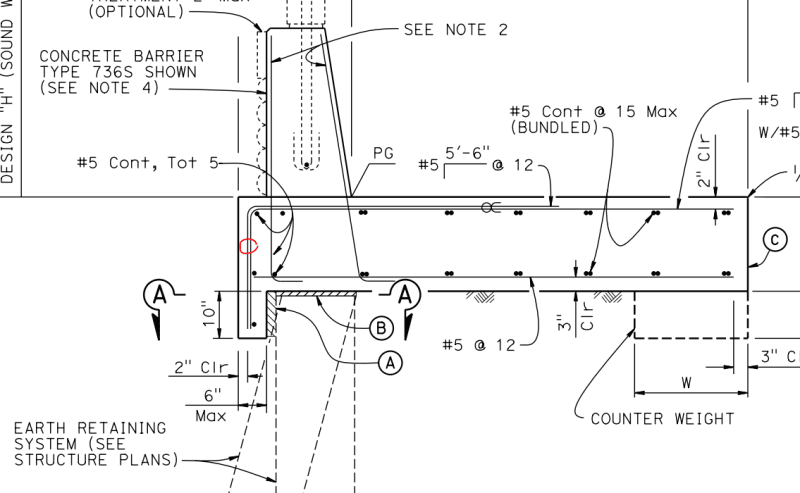I have a detail very similar to what you showed that I am using on a current DOT project under design. I also do the same for the edge of precast plank bridges with concrete toppings and crash barriers on the edges. I would wager to guess that the #5@12" that runs the full 8'-0" width of slab is sufficient for the 34psf wind load but that the vehicular collision load of 54 kips requires a bolstering to the top mat reinforcing. Since vehicular collision loads are distributed over a set width and distribute out as you trace the load down the wall and back through the slab, after around the 4'-0" mark or so, the moment demand was reduced and the added reinforcing was no longer necessary but they ran it the additional 18" for development. However, since the overall width of the slab is not that much longer (at 8'-0") I would have just detailed it with #5 @ 6" the full slab width since it's really only 2'-6" extra length of reinforcing every other bar.
The reason for two hooks is because both bars are structural and it's better to develop them across the width of the barrier with a hook than just a straight bar. Sure, you can technically develop the bar in 22" as a straight bar but I don't like to mess around with vehicular impact loads as they are so wildly unpredictable and are already based on total pseudo static load cases. Just hook it and be done with it. Also, hooks at 6" are much more likely to keep that skinny edge drip piece from breaking off in the future.


